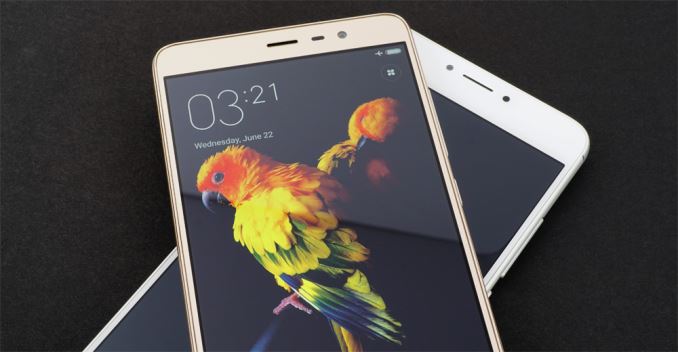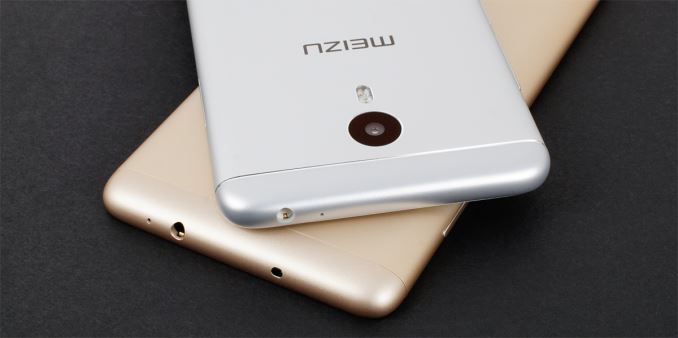The Meizu M3 Note vs. Xiaomi Redmi Note 3 Review: Comparing Notes
by Matt Humrick on July 12, 2016 8:00 AM EST- Posted in
- Smartphones
- Mobile
- Xiaomi
- Meizu
- Redmi
Final Words
I’ll admit it: I’m spoiled. I’m used to using the latest technology and playing with the recent flagship phones. I do not get many opportunities to review lower-cost devices, so I was not sure what kind of user experience to expect. After looking at the Meizu M3 note and the Xiaomi Redmi Note 3, I can say that both exceeded my initial expectations but in different ways and to different degrees.
The M3 note’s aluminum chassis is sturdy, with an attractive, symmetrical design. Additional machining details, such as the groove for the volume and power controls and the slots on the back that hide the endcap seams, are a nice touch shared with Meizu’s more expensive models. The M3 note also has a great fingerprint sensor, and Meizu’s Flyme OS includes some nice navigation features, like swiping up from the lower bezel to access recent apps instead of tapping a dedicated button.
The Redmi Note 3 and its Snapdragon 650 SoC easily outperforms other phones in its price range and approaches flagship numbers in some of our system performance tests. It cannot match the peak GPU performance of higher-tier SoCs, but its sustained performance is nearly the same once temperature forces the other GPUs to throttle frequency. Whether opening or switching apps, navigating the UI, scrolling in the browser, or working in apps, this phone feels fast. The Redmi Note 3 is a clear leader in performance per dollar.
Due in part to their larger-than-4000mAh batteries, both phones deliver excellent battery life, lasting more than 12 hours in our Wi-Fi browsing test—the longest of any phones we’ve tested—and nearly as long in PCMark. The M3 note’s battery life is generally a little better than the Redmi Note 3’s, but the latter remains close while delivering much better performance.
While there are positive elements for both phones, we need to be realistic. Neither phone delivers the same user experience or has the same feature set as more expensive flagships. In order to reach a lower price point, some compromises naturally need to be made. This becomes obvious as soon as their displays light up. Both panels are capable of reaching a respectable 450 nits max brightness and have good viewing angles, but black levels are subpar even among other phones in their class. Both panels also fail to cover the full sRGB gamut, reducing color accuracy. Their default calibrations also miss the target white point, giving the Redmi Note 3’s screen a blue tint and the M3 note’s a magenta hue. Both phones offer the ability to adjust white point, but only the Redmi Note 3 provides a setting that actually improves grayscale accuracy. Unfortunately, the Redmi Note 3’s poorly configured gamma leaves its screen looking dark with less shadow detail, which is most noticeable when watching movies or playing games.
Camera performance is another area where these two phones struggle. The Redmi Note 3 is clearly the better of the two, capable of capturing some nice looking images in good lighting. Its HDR mode is also effective, naturally brightening darker areas while maintaining color saturation and detail. As the lights dim, however, its performance drops. Like the M3 note and the other phones we tested in this price class, it produces noisy images lacking in detail. Even with good lighting, the M3 note’s images show excessive shot noise that noticeably degrades image quality. It also experiences issues with exposure and focus in certain conditions.
The M3 note is noticeably slower than the Redmi Note 3, but its performance is similar to other phones in its price range. People who primarily use their phone as a communication device—phone calls, email, messaging—or for working with lightweight apps—scheduling, note taking, web browsing—will likely find it to be fast enough. The M3 note can handle casual games, but it’s not capable of playing more demanding 3D titles.
At the beginning of this review I noted how similar the M3 note and Redmi Note 3 are on paper and wondered if this would translate into an equivalent user experience. The short answer is no. The Redmi Note 3’s superior performance and slightly better camera give it the edge. It just feels fast, much faster than its peers using octa-core A53 CPUs, which just are not going to be competitive at this price point anymore.
While the pace of innovation at the high-end naturally slows, the mid-range and low-end phones start looking more attractive. Flagship features and hardware continue to trickle down to lower price points, producing more-capable phones with better user experiences. Both the M3 note and Redmi Note 3 are evidence of this trend. Xiaomi’s introduction of the Redmi Note 3, however, goes even further, signaling a jump in capability that all new phones in its category will need to match.














79 Comments
View All Comments
Pissedoffyouth - Tuesday, July 12, 2016 - link
I have a Redmi Note 3 and I generally get >8h SOT over 2 days. I LOVE LOVE LOVE this phone.It's just a pity they can't stick bigger batteries in phones that cost 3x as much
Le Geek - Tuesday, July 12, 2016 - link
I know right!!! I too have the same phone and never have I gotten a sot less than 9 hrs. This device is turning out to be the best Tech purchase I've ever made. Cheers!!ddriver - Tuesday, July 12, 2016 - link
They can, just don't want to.JeffFlanagan - Tuesday, July 12, 2016 - link
They don't want to because it would be a bad choice. This way people who want a bulkier phone with longer battery-life can get a battery-case, and people who want a thinner phone at the cost of battery-life can skip the case. The alternative is a bulky phone that's only appealing to people who need a larger battery, so have to put up with a larger device.TechnikalKP - Wednesday, July 13, 2016 - link
The iPhone 6+ is 7.3mm thick. The Redmi Note 3 is 8.6mm. That's less than the thickness of a US dime.close - Wednesday, July 13, 2016 - link
Bulky? Compared to what? Compared to the thinnest flagships maybe. But compare it to anything any normal person would consider acceptable and it's nowhere near bulky. I've never heard anyone saying "oh I wish this phone wasn't so bulky" when talking about normal phone thickness in the past years. Battery complaints though? All the time. What's the ideal thickness? The S6 Edge was 7mm while the S7 is 7.7mm. So adding 10% to the thickness didn't raise any eyebrows.Yes, putting a bigger battery would be a bad choice for all kinds of ignorant people thinking that a battery case is the same as adding an extra mm to the thickness of the phone and also for phone manufacturers who know that a battery that barely lasts a day when new will push you to get a new phone when the battery is 2 years old and you spend most of the day tethered to an outlet.
Spunjji - Thursday, July 14, 2016 - link
Agreed with this. My Nexus 5 was almost useless to me after 18 months; by 2 years I was charging it 2 or 3 times a day. I can't believe for a second that one or two additional millimeters for 10 to 25% additional battery capacity would have been a bad choice for that device, what with it being very thin already and having a stupid camera bump.Battery cases are a terrible solution - they are restricted to a single device, add unnecessary bulk and increase the complexity of charging.
Impulses - Thursday, July 14, 2016 - link
I was on the same boat, recently decided to open it up and swap the battery as I'm keeping it until the next round of Nexus at year'd end. I hope even the next 5" model goes for at least a 3000mAh (and/or wireless charging)... Otherwise I might be looking at larger phones which I've resisted all these years.Bulat Ziganshin - Wednesday, July 20, 2016 - link
The new battery for Nexus4 costs me $10 at aliexpressImpulses - Thursday, July 14, 2016 - link
A battery case isn't really comparable, or even a viable choice I'd argue. They're only made for a handful of flagship models, and they add a lot more bulk relative to the battery life you gain (and compared with phones that have larger batteries and are just a mm thicker)... You can't honestly be serious.